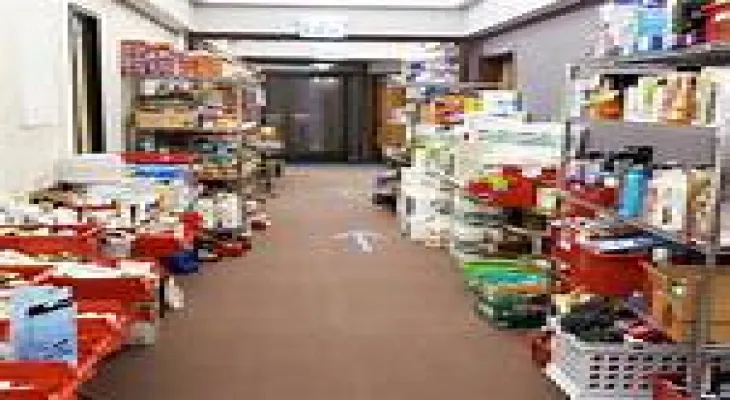Search here
Newspaper
Search here

Arab Canada News
News

Published: October 30, 2023
Every Friday, people line up around the building to get dinner from a small church across from College Street in downtown Toronto, where volunteers working in the food program inside serve a hot meal along with some rice and perhaps fruit and yogurt if supplies arrive.
Reverend Canon Maggie Hildebrand, who helps manage the program outside St. Stephen in-the-Fields church, said that she regularly serves 130 people for dinner on Fridays, compared to the twenty she saw a few years ago.
On Saturday and Sunday mornings, the breakfast line is longer, with hundreds of parents, seniors, students, and working and unemployed adults.
Hildebrand added, "We are scrambling every week," "Every week our food runs out and we start searching the cupboards and fridges for something we can give to people," "It's horrifying."
This astounding demand is also reflected in food banks and other food programs across the country, where a new report from Food Banks Canada found on Wednesday that this year, with the cost of living rising dramatically, food bank usage has reached its highest level since the survey began in 1989.
The annual HungerCount report relies on surveys sent to food security organizations to track usage in March, and this year's report found that nearly two million people, including a larger number of working individuals than ever before, used food banks in March 2023 alone.
This represents a 32 percent increase over the same month last year and more than 78 percent from March 2019.
It's data that comes as no surprise to the staff and volunteers trying to keep up with the demand.
Hildebrand said, "Anyone working in any kind of food security program knows that things have worsened dramatically."
A few years ago, unemployment was a major factor in the number of people seeking support, as the early months of the pandemic halted the economy, and the report states that food insecurity is now caused by inflation and rising living costs, as more Canadians struggle to afford basics like housing and food.
The study found that the demand for food banks began to explode at the same time inflation surged, at its fastest rate in the past forty years.
Larry Mathieson, who runs the "Unison for Generations 50+" program for seniors in the Calgary area, said, "It is not necessarily that there isn’t enough food. The problem is that we can’t afford to buy food."
The study said that 17% of clients this year have jobs but do not earn enough to cover their expenses.
The report explained, "Food banks have never seen such a high level of need among working populations,"
demand is high from coast to coast, as the food bank in the Waterloo area of Ontario stated that its annual funding needs to double to over $1.6 million to keep up with demand reaching "crisis" levels.
Another food bank in Carbonier, New Delhi, noted that former donors are now coming to their doorstep to help themselves, as one organization in Crapaud, Prince Edward Island, found itself turning people away.
Longer lines, less food? Calls for more transparency when companies cut grocery purchases
Mathieson said that the seniors program in Calgary includes 200 people seeking help daily, during a few days each week, compared to "maybe 12 to 16" during the months prior to the pandemic.
Mathieson said, “With the cost of housing, inflation, and grocery prices, all of these things come together to make the situation worse.”
The study also found that over 640,000 children under the age of 18 used a food bank in the same time frame, which accounts for a third of the total number of clients. More than a quarter of the clients were new arrivals who had lived in Canada for less than a decade, a figure that has doubled since 2016.
Ethnic individuals represent nearly 40 percent of the food bank client base, compared to 32 percent the year prior. Nearly half of the Indigenous population that participated in the report reported experiencing hunger over the past year, compared to only 15 percent of the white population.
The report found that low social assistance rates are also a factor in rising demand. Over 40 percent of clients received income assistance at the provincial level, either public welfare support or disability support, as their primary source of income, and the report states that assistance rates in every province and territory are so low that they cannot lift many families above the poverty line.
The report offered several recommendations to help alleviate food insecurity, such as better support for low-income individuals, providing more affordable housing, and creating better financial support for seniors receiving fixed pensions.
It concluded, "The key is to address declining incomes as well as high living costs, not either or."
Hildebrand said that her church relies on donations and food rescue programs to keep the service going, although donors, like consumers, are also struggling to pay grocery bills, and she noted that church volunteers have never turned anyone away but do not provide as much as they wish they could.
She added, "I can tell you that people have gone away with some odd and sometimes unsatisfying meals, like, this piece of granola and an egg that cracked while cooking and a slice of bread."
"Sometimes that’s definitely not what we want to be offering people."
Comments